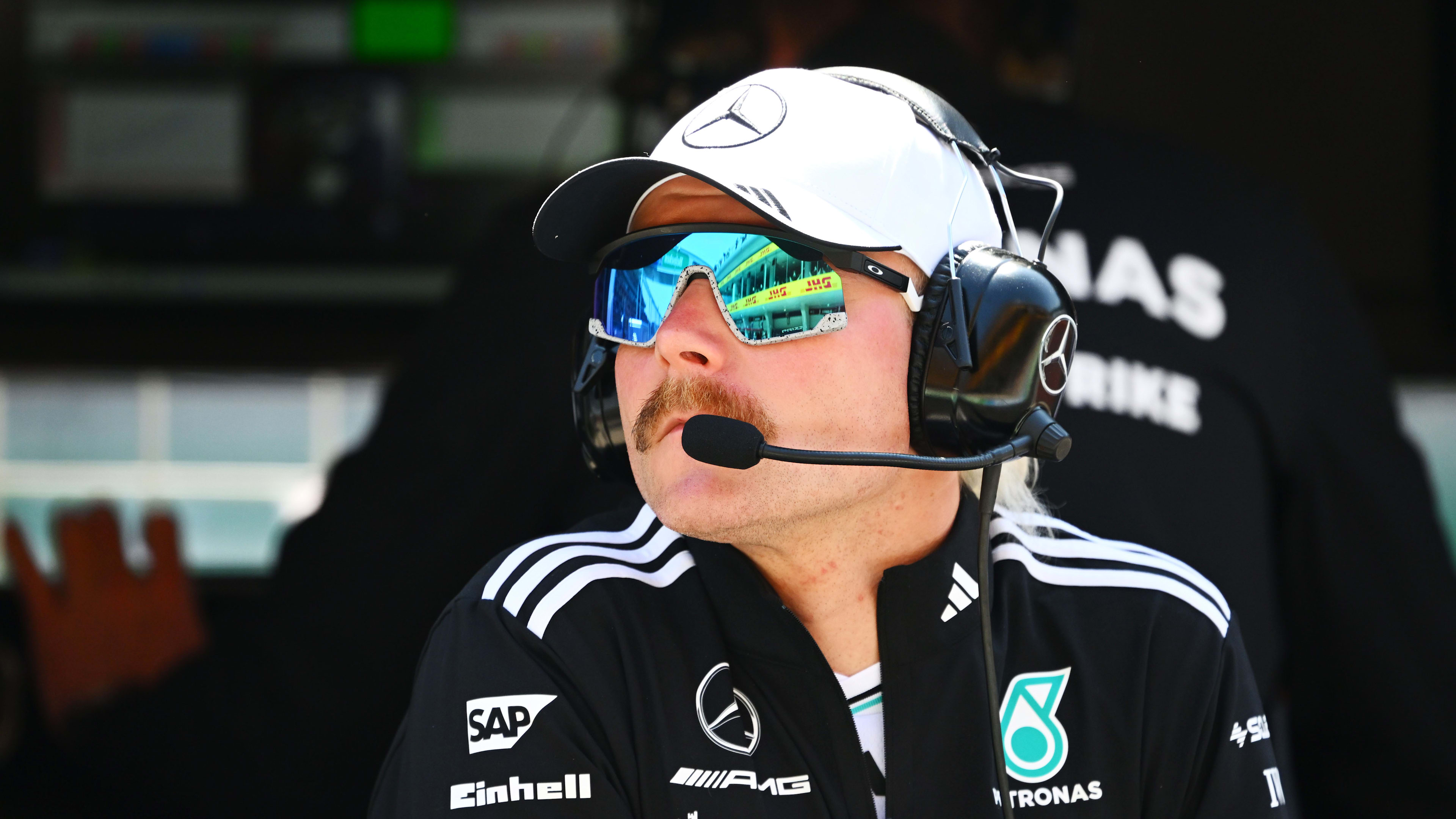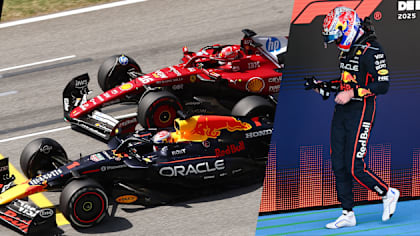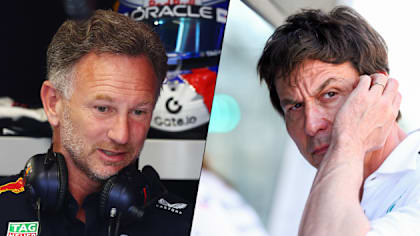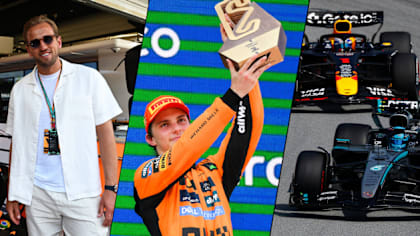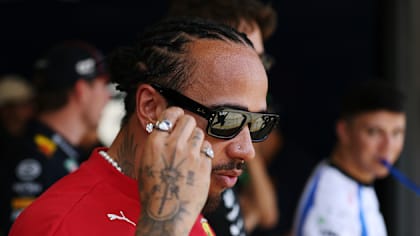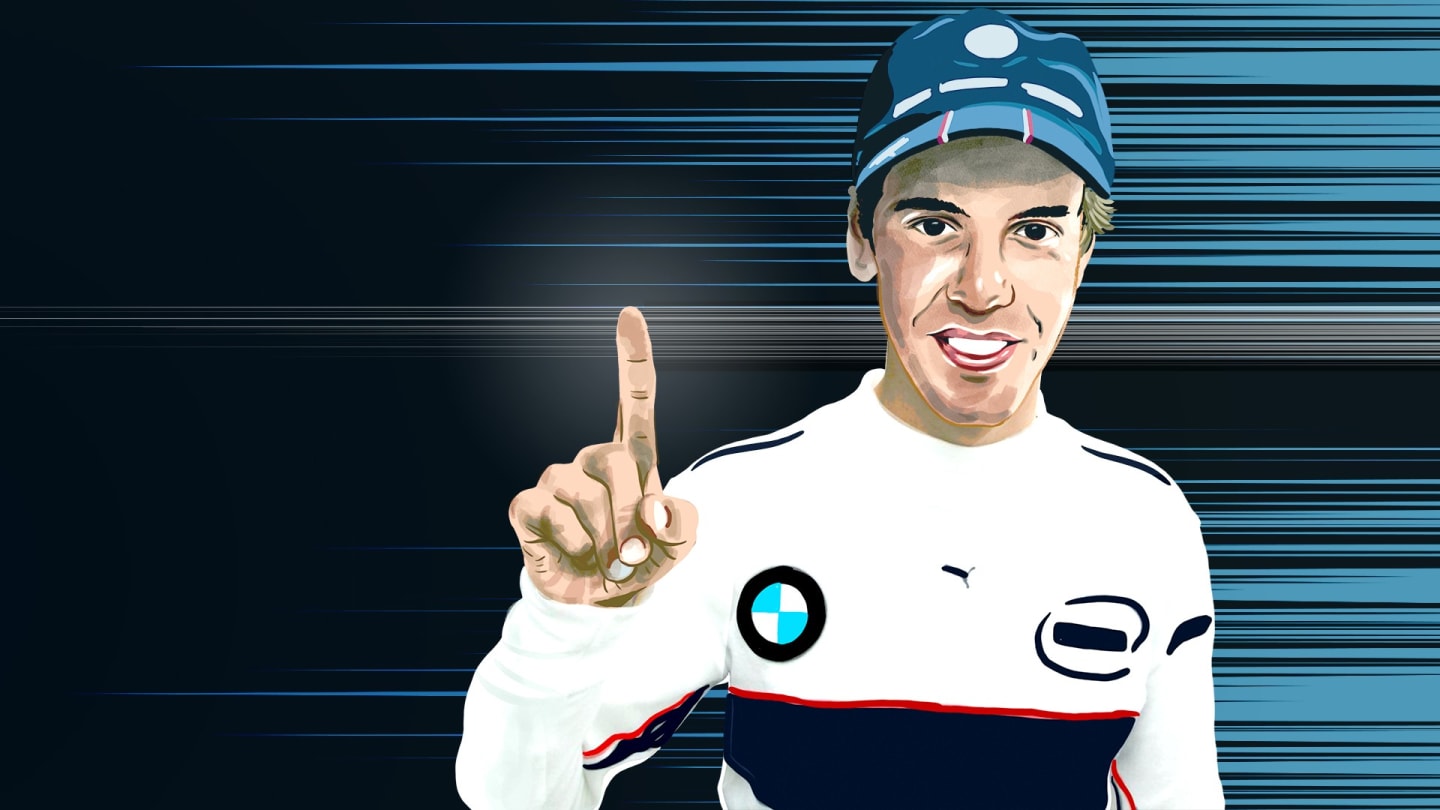
Feature
ORAL HISTORY: The inside story of Sebastian Vettel’s first Formula 1 point on debut in the 2007 US GP
Share

Sebastian Vettel is one of Formula 1’s all-time greats, the German winning four successive world titles with Red Bull. He became F1’s then youngest points scorer by finishing eighth for BMW Sauber as a stand-in for the injured Robert Kubica at the 2007 United States Grand Prix at Indianapolis. On the 15th anniversary of his debut, we speak to the key characters who were involved in the weekend that provided the launchpad for one of F1’s most successful drivers…
It’s Sunday June 10 2007, race day for the Canadian Grand Prix at Montreal’s Circuit Gilles-Villeneuve. McLaren’s Lewis Hamilton is leading the way and heading for what will be his first victory in F1. Further back, BMW Sauber’s Robert Kubica is chasing Toyota’s Jarno Trulli when on lap 26, he tries an overtake on the approach to the hairpin at around 180mph. He clips the Toyota, lifting his car into the air before viciously hitting a wall and then barrel-rolling across the track. Remarkably, he escaped with only a slight concussion and sprained ankle.
The Pole spent the night in Sacre Coeur Hospital in Montreal where he underwent CT scans and further tests. The team’s founder Peter Sauber and Team Principal Mario Theissen visited his bedside on Sunday night. The next day, he was given the all-clear and drove back to the hotel himself. He then headed on to Indiana, as the United States Grand Prix was taking place the following weekend at Indianapolis, fully intending to compete. But the decision was not his. He would be put through a series of checks by the FIA Medical Delegate on Thursday, a day before first free practice. Without the all-clear, he would have to stand down and BMW would require a reserve.
READ MORE: How Vettel created a buzz by constructing ‘hotel for bees’ close to the Red Bull Ring
Andreas Seidl, Head of Trackside Operations (now McLaren Team Principal): “It was obviously a very intense period for the entire team and an emotional rollercoaster as well, because we experienced as a team the big crash in Montreal on Sunday where for quite some time, we didn’t know if Robert was still alive. Then the big relief in the evening, having the positive news that he was pretty much unhurt. We visited him in the hospital that night. With that, we left for Indy. It was a double header so there was not a lot of time. We knew we had to be prepared with our reserve driver Sebastian as we were aware there was a chance Robert couldn’t drive.”
Ossi Oikarinen, Head of Test Team but standing in as Race Engineer: “I was heading the test team in those days at BMW Sauber and there was an issue with Kubica’s regular race engineer. He could not get the visa to the US so the plan was for me to go to Canada to learn the ropes and see how Kubica is as a driver and learn to race engineer him. Then he had his massive shunt in Canada.”
The team supported Kubica’s wish to race, but they had to plan for a scenario where he would be denied. Fortunately, they had two options. One was Timo Glock, a German who had four Grands Prix under his belt for Jordan in 2004. The other was Sebastian Vettel, a 19-year-old German rising star who had completed seven Friday practice sessions for the team, as well as hundreds of private test miles. He’d grown up with the marque, too, having competed in and utterly dominated the Formula BMW ADAC championship in 2004, taking 18 wins in 20 races. He was the reserve – but he had also never raced in F1. Theissen had to decide – but he had time.
LONG READ: The lesser known Sebastian Vettel – getting to know the man who snubs social media
Kubica or Vettel or Glock?
It’s Thursday in Montreal and the team get the results back. Kubica has failed the medical and is denied the chance to race. He’s irritated, furious even. But there’s nothing he can say or do that can change the situation. Having done the press conference earlier in the day, he leaves Canada as soon as he can and heads back home to recuperate. The team and the world then wait for Theissen’s decision.
Mario Theissen, BMW Sauber Team Principal: “The doctor’s verdict on Robert came on Thursday afternoon. Immediately after, I called Sebastian into my office and said: ‘Be prepared, tomorrow morning you will be in the car.’ He said he had hoped for that! He knew there was a minimum chance for Robert to be allowed to drive. Timo Glock was our other test driver in 2007, but of course Sebastian had hoped and expected to get the drive.”
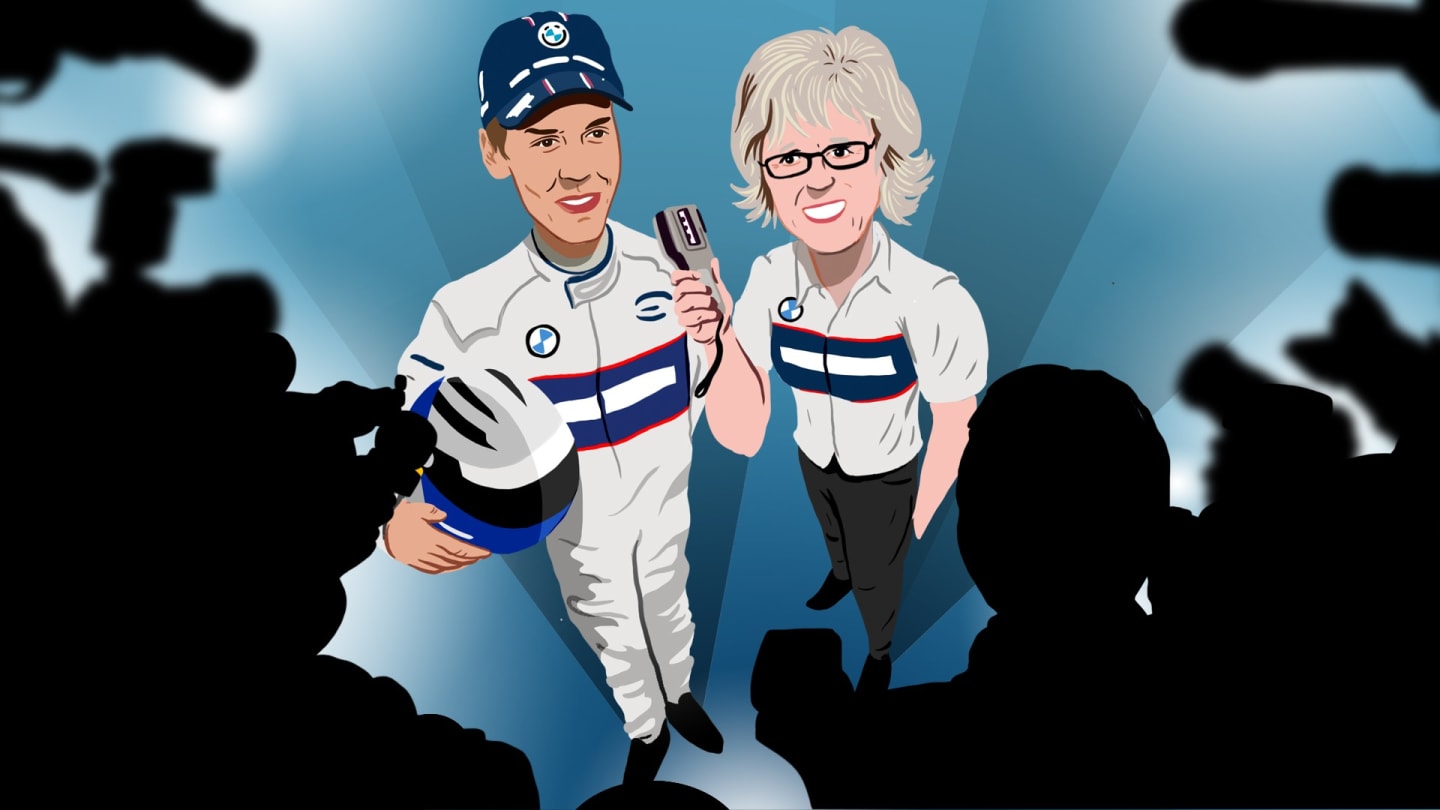
Andreas Seidl: “It was also not crystal clear for Mario at the beginning of the week who was the reserve. During the week, we made sure we got everything ready just in case. We had done our preparation back home before the season started to make sure we had a seat available for Sebastian. I was in charge of driving installation, I did all the pre-fits back home with the mechanics. We just had to wait for the medical green light or not. When we got the verdict, it was important to stay focused, get Seb ready for the car. We did the seat fit again at the track, and then the task was for engineering to get him ready with finding the right balance between going through as much as you could in order to have him as prepared as possible but at the same time, in these situations, focus on basics and not overload the driver, because it’s clear when you go into your first F1 race ever, the task is huge.”
Beat Zehnder, BMW Sauber Team Manager: “We left Canada very happy that Robert was basically unhurt after such a crash. When the doctor didn’t approve him to race, Timo was hoping to get the ride rather than Seb. It was Mario’s decision to put him in the car. My focus especially on Thursday was with Robert, because he was so annoyed. But after that, my attention turned to getting Seb ready. Seb was, as from the beginning, a tight part of the team, he was a team player. He looked very young. He looked like a baby. In Istanbul, when he did P1, my wife was there in the evening. She arrived in the evening. There was this youngster coming in who looked lost and she said to me, ‘This poor kid, where are his parents?’ I said ‘Ah this is our reserve driver, this is Sebastian Vettel!’ He was such a nice bloke.”
ORAL HISTORY: The inside story of Kimi Raikkonen's legendary first F1 test
Mike Krack, BMW Sauber Chief Engineer: “There was not huge emotion when we found out Seb was in the car. If you lead a team of engineers, your main task is to perform on the weekend. It is not about whether we had driver A or driver B. It was clear Robert was not driving; Sebastian was the driver. That was the focus. If you asked nine guys, there would be three who would like Timo, three who would like Sebastian and three who wanted Robert. It was a complete mix. All in all, with the three of them, it was a good group – they were all good drivers, you could rely on them. If we had put Timo in, we would not have made a mistake. You also have to respect the decision made by top management. If they decide this is the driver they go with, we go along with it.
Ossi Oikarinen: “The driver changed at the last minute and you’re turned upside down. I was supposed to run an experienced race car driver. It would have been easier for me to slot in with an experienced driver than doing the first race with a new driver. So that was a bit of an uphill struggle for both of us. But one which we both enjoyed!”
Ann Bradshaw, BMW Sauber Press Officer: “Even after the call came that Robert wasn’t allowed to race, he still had to go into the FIA press conference. Someone said to him: “Do you remember the crash?’ And he said: ‘Well yes, I was there!’ He then left and it was a matter of getting Seb ready. Seb was a dream to work with, he took it in his stride. It was his big opportunity.”
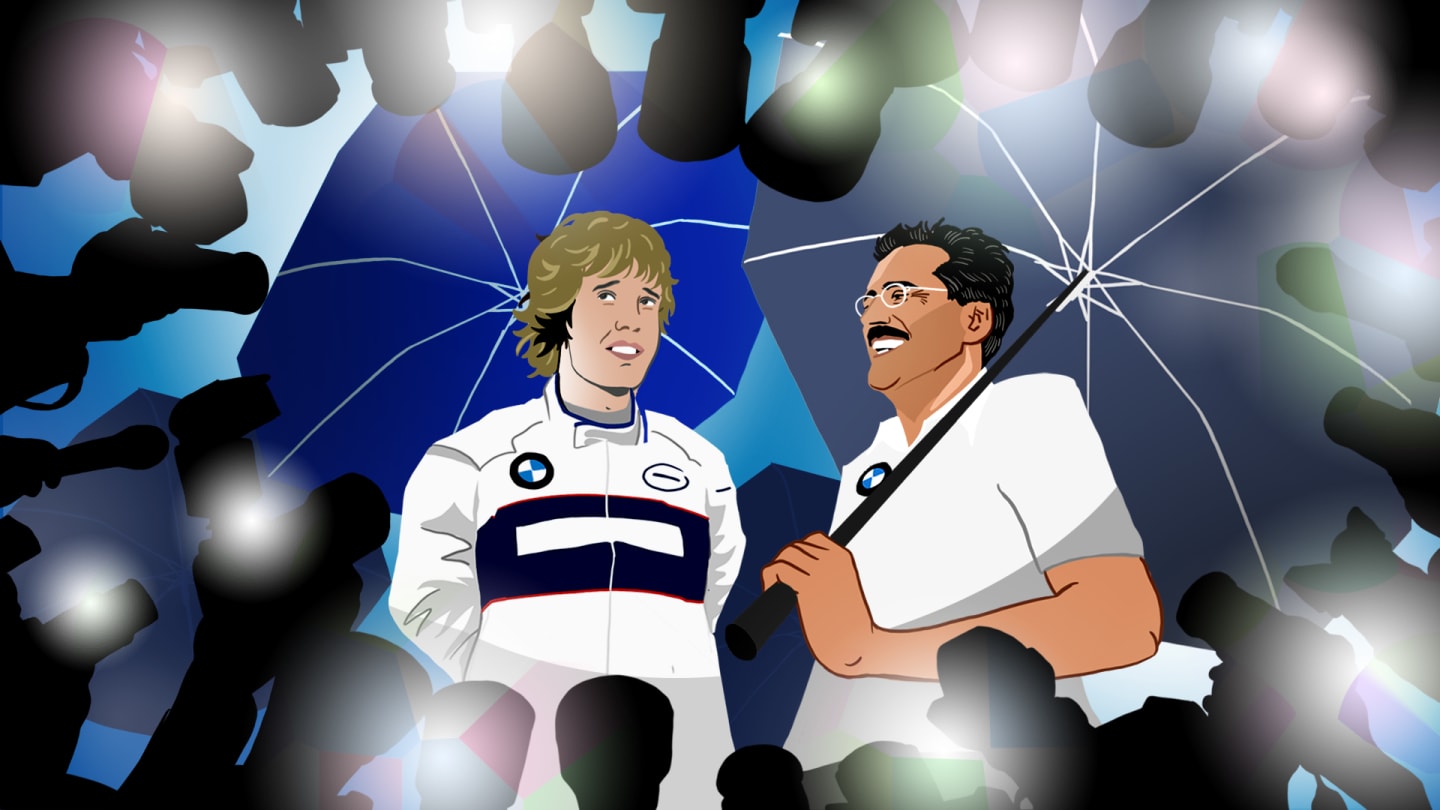
Hitting the ground running in practice
Vettel had made a habit of getting in nice an early on a Friday to prepare for his FP1 appearances with BMW Sauber – and it was no different now he had been temporarily promoted to race driver. This time, though, he was tired – he hadn’t slept well. The nerves had kicked in – and that meant a night of disrupted sleep, tossing and turning. But he didn’t show it when he turned up in the morning, ahead of a significantly busier Friday than he was used to.
There were engineering meetings, one-to-one catch-ups with his race engineer, pep talks from senior management and some alone time to read through manuals and refresh himself with the machine he would be making his F1 debut with. Having been part of the team for months, he settled in quickly. The team were used to him. He was used to them.
Mike Krack: “It was quite easy, he settled quickly. Expectations were low – and that was a good thing for him as it took the pressure off. He was the typical 19-year-old, always joking. He travelled with us, was very entertaining and very charming. He’s not an introvert, he was open and laughing. It was nice to spend time with him. And I think this helped him immerse himself into the team and ready himself for this opportunity. He’s a worker. You have talented people who are lazy and then you have workers who are not talented. He’s both! That’s why he is a multiple world champion. A talented driver who is also a worker always succeed. But he knew the limit. Drivers can sit there until 2am and then they are too tired to drive the next day. He knows how long he needs to stay and when he needs to go to let the engineers do their job and delve into the data. He was like that then and is still like that now.”
Ossi Oikarinen: “When we started the race weekend, it was amazing how nobody expected anything from us. Kubica and Nick Heidfeld were very experienced drivers, so when they put Sebastian in the car, the expectation was he was going to run his first race, drive around and get some experience and that’s it. Sebastian was new, I was new, and we were left well alone. But as Friday went on, they started to notice he’s doing a good job, he’s stepping up and improving. We were lucky the team had very experienced engineers who could help and advise us on things like set-up. They saved us really. These guys really pulled it off for Sebastian.”
ORAL HISTORY: The inside story of Stewart GP’s fairytale ‘99 European Grand Prix victory
Mario Theissen: “It was clear he had learned from [seven-time world champion and mentor] Michael Schumacher that spending time with a team and getting to know them was important. To be a Formula 1 driver, it doesn’t start and end with driving the car, you have to get the team behind you. You have to share experience because the engineers have the data and the driver can only be quick if he’s confident in the car. It’s two sides that have to match. If a driver says put the car on the grid and I’ll do the rest, he’ll never be world champion. Sebastian understood that and applied that approach from the minute he joined the team – and that paid dividends from the start of practice on Friday.”
Ann Bradshaw: “He’d done a few practice sessions with the team so he knew the car. Everybody in the team had confidence in him. The team knew he was special, having known him since the Formula BMW days. He was more than capable of doing it, no matter how young he was. He was always with the engineers, he never hid himself away. He liked to be in the motorhome talking to people, meeting the media. He was as good as gold with the media. After he got out of the car at the end of the first session, he came out of the back of the garage and I had all the journalists there. He pulled me to one side and said ‘I can’t talk to the media as Mario has said I shouldn’t.’ I found Mario and explained to him why we can’t hide a rising star. To give Mario his due, he apologised. We sorted it out and Seb answered every question. He took the attention in his stride.”
Those preparations and attention to detail paid off for Vettel as he ended the first session fourth quickest, half a second adrift of his team mate Heidfeld. He followed it up with 11th in FP2, as he worked on getting used to the car on high fuel, and then finished a brilliant second in final practice, just 0.171s off Fernando Alonso’s quickest time. He was causing quite a stir. That didn’t stop some of the media poking him in the ribs for his youthfulness, at just 19 years and 11 months, with a gift of a bib and baby bottle!
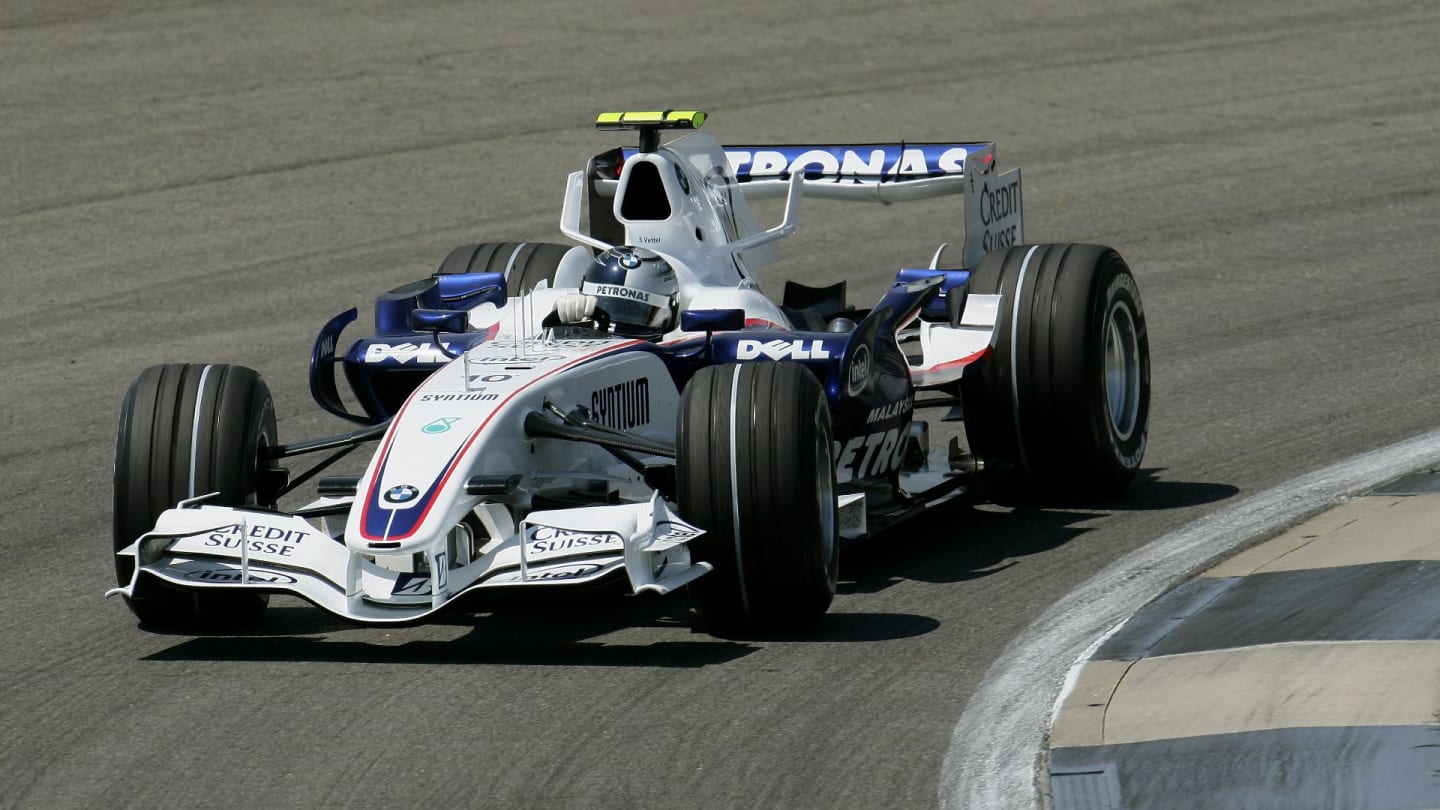
Despite barely sleeping the night before, Vettel settled into practice easily finishing in fourth
Causing a stir in qualifying
Vettel was a story the moment he got in the car in Indianapolis, but the demand for his time became even greater as he built momentum through practice. He had a car capable of easily making it into the top 10, but equally, this was the first time he was going up against the world’s best, on low fuel and fresh tyres, with the pressure ramped up beyond belief. But you wouldn’t have known, so cool was Vettel that he quickly started extracting a lot out of the car. He cruised into Q2 with the third quickest time. The German went a tenth quicker in the next session, heading into the top-10 shoot-out with the eighth fastest time. And while he made a slight mistake in Q3, he still managed a superb seventh on the grid, just 0.5s off his more experienced team mate Heidfeld.
Andreas Seidl: “Seb handled the whole situation really well. He blocked everything out and stayed focused on the job. You could see very quickly by the way he was dealing with everything that he was something special. At the same time, he was doing a good job at everything that was not related to driving such as dealing with the media. In his interviews – there was a lot of attention on him – he was on it. You could see he was an unbelievable talent.”
Ossi Oikarinen: “My overriding memory of Saturday was how mature Sebastian was about everything. It was his first weekend in F1. This was the chance he had been waiting for. It could have been overwhelming, competing in his first qualifying session, but he concentrated on the job he had to do as if he had done it before. He was always interested in everything. He wanted to learn, to question. He was always looking for ways to improve. There are some drivers who want to know a little bit and then they go away. Sebastian wanted to know everything. Sometimes you feel he wants to know too much!”
The nerves creep in on the grid
Though Sunday was the biggest day of his racing career, Vettel slept better than the previous night. It wasn’t perfect, there was still disruption, but his qualifying performance had given him confidence. It meant he was fresher come Sunday morning – but the nerves remained and that was evident on the grid. He retreated into his shell as the enormity of the situation sunk in.
Zehnder noticed this and tried to diffuse the tension by teasing him. Others joined in and joked with him, raising a few smiles and taking his mind off the race for a few seconds to ease the tension. But when it was time to get in the car, he flicked a switch. A sharp focus descended. He moved into the zone. It was game time.
Ossi Oikarinen: “He did not get nervous during the weekend, apart from on the grid before the race start. That was the first time I noticed he wasn’t at ease. But that was the only time. We went through the usual stuff you speak to the driver about in the minutes before the start. You run over the strategy again and the overall plan for the race. It’s nothing out of the ordinary. It was his first race in F1 but he had a background in racing and knew the team
The way he recovered, it was clear he was a real Formula 1 driver.
Mario Theissen
Skating across the grass at Turn 1
Vettel hit his marks perfectly after the formation lap and went through the programme on the steering wheel methodically. But when the lights went out, he was slow away. A gulf to the others opened in front of him. He moved across to defend his position – and did so. Then as he closed on the first corner – a right-hander – the cars in front got closer quickly. Too quickly. He had left it too late on the brakes. He took avoiding action and did well to avoid clattering into Heikki Kovalainen – but that meant cutting across the grass, and dropping out of the top 10. It was his first real mistake all weekend.
Ossi Oikarinen: “He messed up the first corner. I should have warned him that with a car full of fuel and cold brakes, he had to take it easier – but hey-ho. It’s always easier to say that afterwards. That was the only point he made a mistake. It was amazing how well he responded after that.”
Beat Zehnder: “I remember saying to him that we have a long way to Turn 1 and his brakes will be cold so he needed to heat up his brakes during the formation lap and not brake too late. And what happened? He braked too late. He went over the grass! I put my head in my hands.”
Ann Bradshaw: “There was a bit of a to-do at the first corner of the race. He went into the first corner and across the grass. I remember him coming on the radio and said something like ‘there’s been a bit of a kerfuffle.’ All the Germans looked at me – they had no idea what he was talking about! It was a word he picked up from Carlin when he raced with them! Obviously he then fell back to 11th. It could have knocked his confidence, but it didn’t.”
Sebastian Vettel, then-BMW Sauber driver: “I decided to brake a bit later to keep the contact to the field in front. But it was a bit too late and I could not finish all of my braking, as there was Heikki Kovalainen braking and fighting with another car and being quite slow in that moment. I decided to go straight and cut the grass. Otherwise I would have hit him, and then for sure his race is over – and mine.”
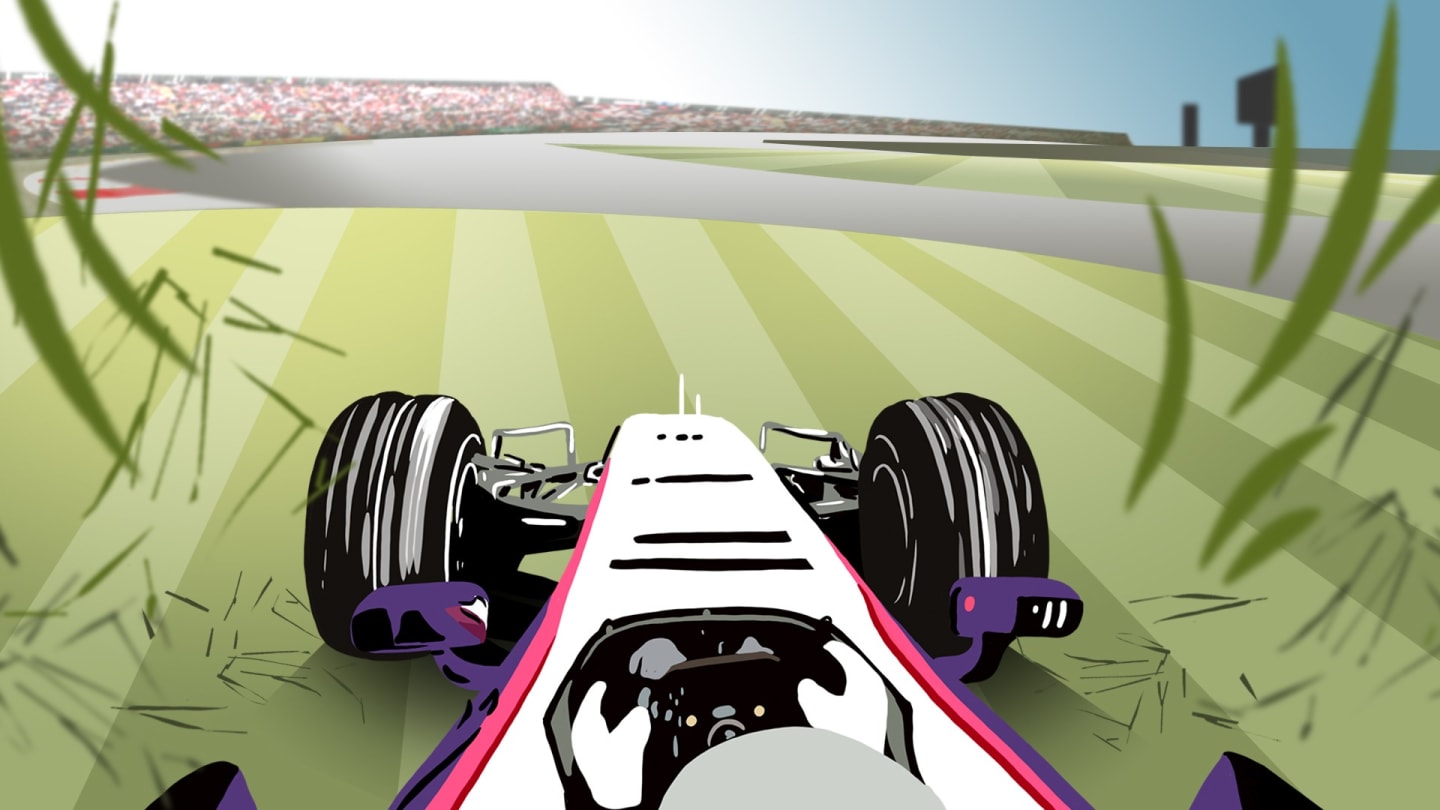
Making history
Not only had Vettel dropped out of the points (which were only handed out to the top eight at the time) but he was now in traffic. The German, though, was unfazed and fought back brilliantly to ninth. He heaped the pressure on Mark Webber, who would be a future team mate, but couldn’t find a way through. A recovery back into the points looked to be a step too far, until Lap 68 when Nico Rosberg suffered a hydraulics issue, forcing the Williams driver into retirement. That promoted Vettel into eighth and the final points-paying position.
Ossi Oikarinen: “He just put his head down and started driving. He fought back into the points but it was bittersweet as Heidfeld had been set for a strong result but had to retire. It was a good result for him – a point in his first race. Not perfect, but a good performance.”
Mario Theissen: “He did well. He screwed up the start, he lost a few positions, but he ended up with a point. Like his first appearance in an FP1 session for us, it was a very solid performance. That FP1 was in Istanbul in 2006 and a day I’ll never forget. We wanted to give Sebastian the first chance to do an official practice in a Formula 1 car but he was below 18. He didn’t have the record required to enter a F1 event. I had phone calls the entire day with [then-F1 boss] Bernie [Ecclestone] and [then-FIA President] Max Mosley, until we got the deal done to get Sebastian in the car on Friday. As the regular drivers were using FP1 for homework, Sebastian got a car with no fuel and fresh tyres – and he set the fastest time. Sure, he had a good car, with fresh tyres and low fuel but this was his first time in the car on a race weekend, with everyone looking at him and wondering who he was, and he delivered. In Indy on that Sunday, he delivered a solid race. Yes, he made a mistake, but he was young. The way he recovered, it was clear he was a real Formula 1 driver.”
Ann Bradshaw: “He took that mistake in his stride. He had put the work in so when he needed to up his game, he had the grounding to do just that.”
Peter Sauber, Sauber’s Founder: “I was very happy with Sebastian’s performance across the weekend and, of course, the race result.”
Beat Zehnder: “Sebastian was a good driver, we knew that from testing. After the first corner, he had a very good race and really deserved the last championship point for eighth.”
READ MORE: 9 thrilling title-deciding finales from F1 history
Shortened celebrations
In crossing the line eighth, Vettel smashed Jenson Button’s seven-year record to become the youngest points scorer in F1 history at 19 years and 11 months. But being in America and under 21, it meant celebrations in town were problematic…
Beat Zehnder: “It was something worth celebrating so we took him to The Slippery Noodle, which is Indiana’s oldest blues bar, they say, in the States. But he was too young to enter. They didn’t let him in as when they saw his ID, he wasn’t 21. He’d just scored a championship point in his first F1 race – and they said no way. We stayed, he had to go back to the hotel!”
Mario Thiessen: “He was definitely happy with earning a point. It was a back-to-back race so everyone was tired and keen to get home, but we definitely had time to mark the occasion.”
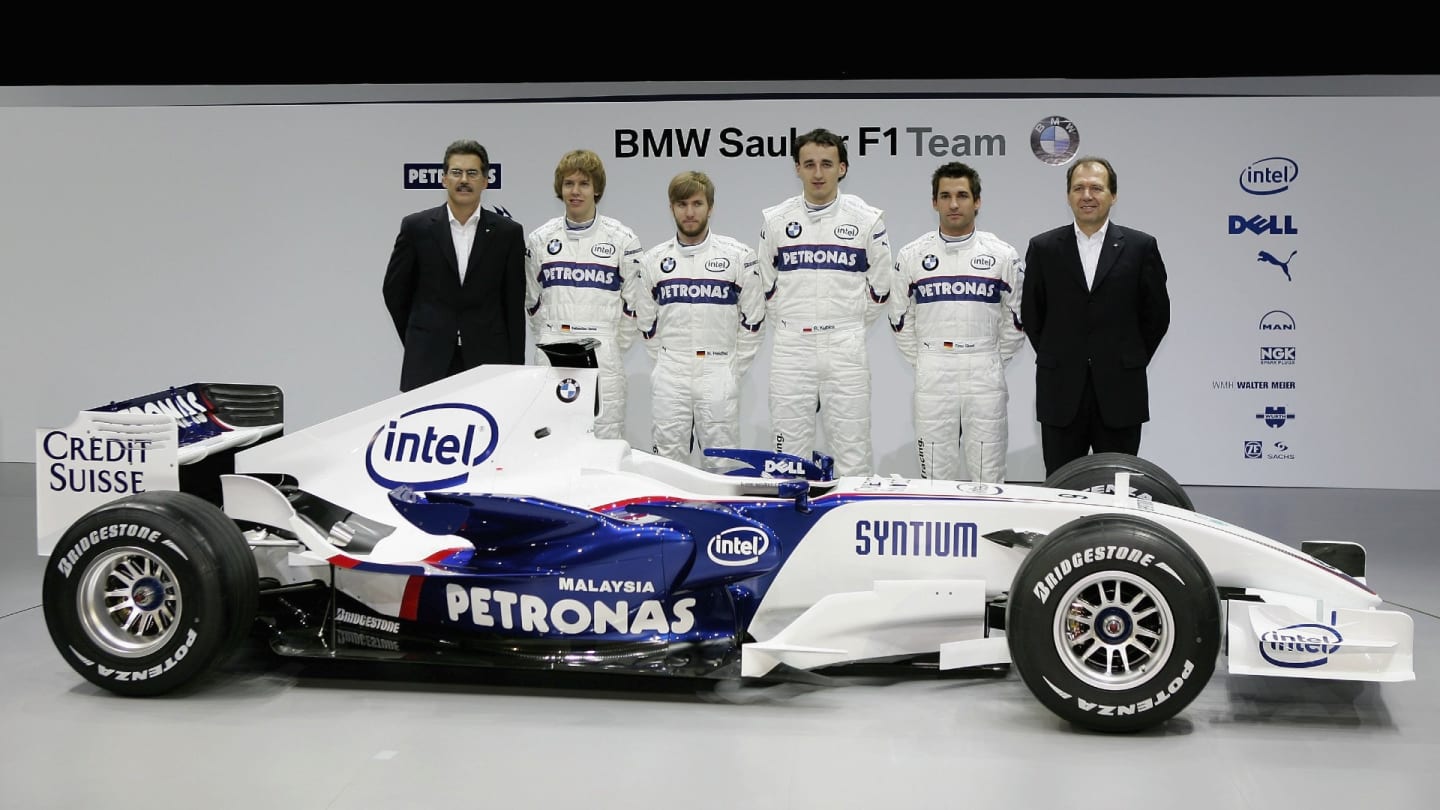
Despite rating him highly, BMW felt it best to keep Nick Heidfeld and Robert Kubica for the next season, meaning Vettel left for Toro Rosso
The next chapter
Vettel’s antics in the United States had made him an even hotter property – but with Robert Kubica fit again, the youngster returned to his role as reserve. However, in another twist of fate just weeks later, Scott Speed lost his race seat at Red Bull’s junior team Toro Rosso. Red Bull’s Motorsport Adviser Helmut Marko got on the phone to Theissen, the two talking regularly as the energy drinks firm had a partnership with the German manufacturer in supporting Vettel, and a deal was done very quickly for Vettel to join the Red Bull family permanently. BMW, knowing they wanted to stick with experience in Kubica and Heidfeld in 2008 and thus not in a position to offer Vettel a seat, released the talented youngster and he was in the Italian team’s car from the Hungarian Grand Prix onwards…
Beat Zehnder: “By contract, we had to offer him a seat for 2008 to keep him. If we didn’t, he would be allowed to leave. He got the chance from Toro Rosso. It was not an easy start to his career. The end of 2007 and for the first half in 2008, he struggled – but the knot opened when he got the shock win in Monza.”
WATCH: 10 moments of brilliance from four-time champion Sebastian Vettel
Andreas Seidl: It was obviously a shame to lose such a talent, but at the same time, I understood at the time why Mario made the decision to stick with more experienced drivers. Robert and Nick delivered results. We were on an upward trajectory with the team. He could have taken a risk – because it was a risk even with what we had seen with Seb – and go for a rookie. It doesn’t matter how big the talent is, it’s impossible to predict how good these guys are in the end.”
Mike Krack: “Was he going to be world champion? He was still very young. If you were to ask me at that point, I would have said I don’t know, or no. In F3, he didn’t win the championship, Paul di Resta won. But he made huge steps when he went to Toro Rosso and then afterwards to Red Bull. I stayed in touch with him from time to time and offered advice where I could. He made the right moves and the right choices. He’s a clever bloke and it helped him to make these choices. The choice that was made was the right one. You also saw what happened with BMW not long afterwards, they left the sport. Moving to Toro Rosso took him out of the spotlight running for a factory team and gave him the opportunity to do a season or two learning the circuits, learning his way. I think it would have been much more difficult if he had stayed for us.”
LONG READ: What it’s really like to be in an F1 team’s driver academy
Ossi Oikarinen: “BMW Sauber didn’t have a seat for him to keep him on, while Red Bull could offer him Toro Rosso. Heidfeld and Kubica were already in the team at that point, it would have been extremely difficult to put him in the car if you had to make the decision. In hindsight, you could have put him in the car and made him into a champion, but in those days, he still had a year to learn, which he did at Toro Rosso, and then went forward. It worked out very well in the end.”
Vettel went on to join Red Bull in 2009, winning four world championships in a row from the following season. He had a solid but unspectacular six-year stint with Ferrari and is currently in his second year at Aston Martin. During his career to date, he’s amassed 53 wins, 122 podiums and 57 pole positions – and he’s still going. While BMW had just one race with him, their decision that day in June 2007 to give him a shot changed the course of F1 history, and they can be proud of giving an opportunity to a young German who has become one of F1’s most successful, talented and adored drivers.
YOU MIGHT ALSO LIKE
FeatureF1 Unlocked MONDAY MORNING DEBRIEF: Verstappen made contact with Russell and Leclerc – but why were they racing each other in the first place?
News Horner and Wolff share their views on controversial Verstappen/Russell clash at end of Spanish GP
Feature SPAIN LOWDOWN: All the key moments as Piastri stars, restart chaos ensues and footballers descend on the paddock
News Downbeat Hamilton says he learned ‘absolutely nothing’ from triple header after tough run to P6 in Barcelona
